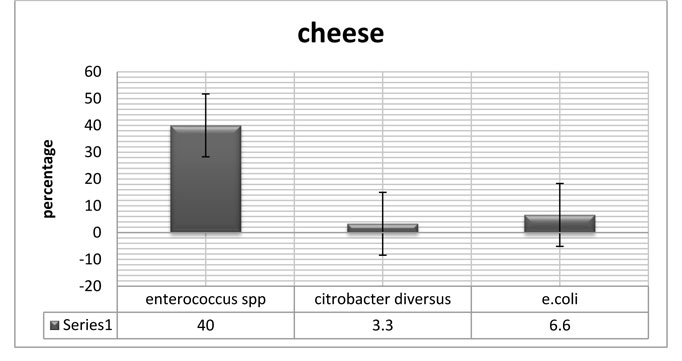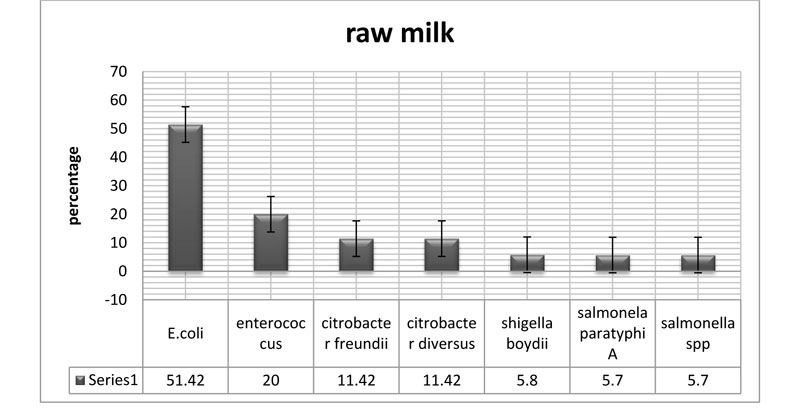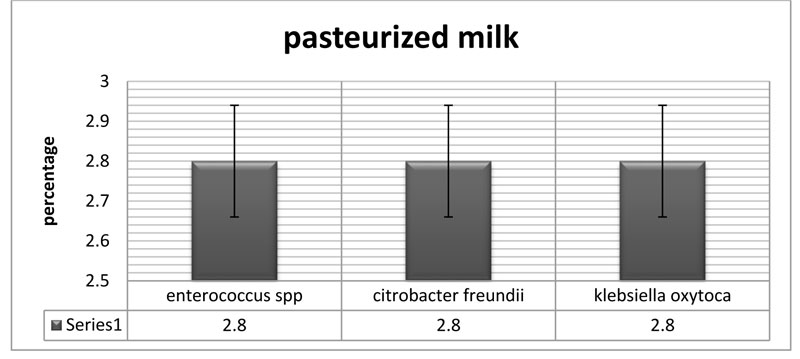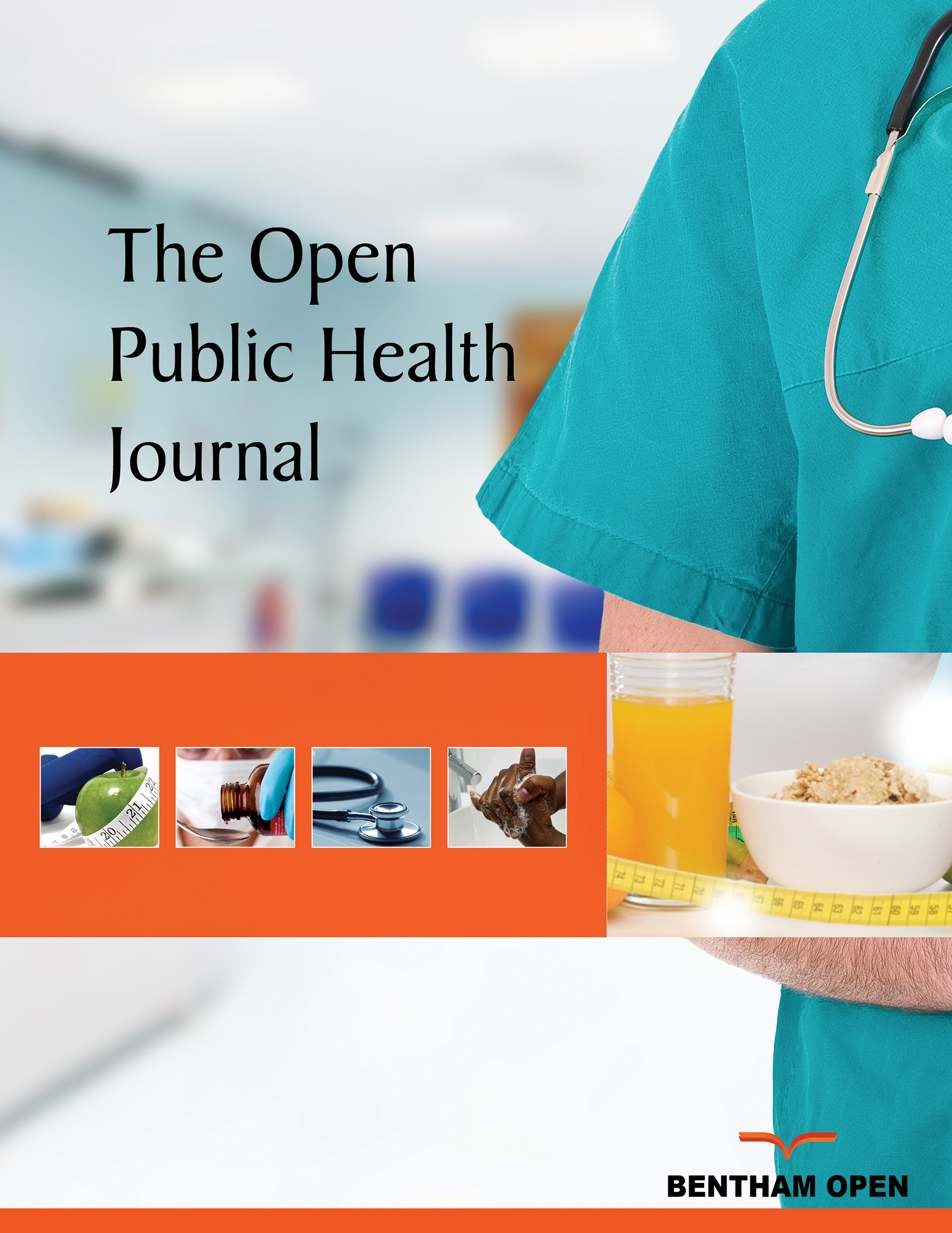All published articles of this journal are available on ScienceDirect.
Evaluation of Microbial Profile of Milk and Some Dairy Products in Ilam, West of Iran
Abstract
Background:
Food-borne diseases can cause many problems and harm consumers and societies. Dairy products are an important part of the food pyramid. In addition, dairy products provide many nutritional needs to humans and can also be contaminated with bacteria and cause gastrointestinal diseases and food poisoning.
Objective:
The purpose of the present research was to evaluate bacterial contamination rate in cheese, raw and pasteurized milk.
Methods:
For this purpose, 100 samples, including 35 samples of raw milk samples, 35 samples of pasteurized milk and 30samples of cheese, were evaluated. Cultures, biochemical and phenotypic tests were performed. Finally, statistical analysis was performed.
Results:
Our finding demonstrates that Enterococcus spp was the highest rate in cheese samples, E.coli was the highest rate in raw milk samples, and citrobacter freundii, klebsiella oxytoca and enterococcus spp were of the same rate in pasteurized milk samples.
Conclusion:
The results obtained in this study demonstrated that some dairy products in Ilam province, were contaminated. So, we suggested that the pasteurized milk and dairy products be done with complete care and raw dairy products should not be used.
1. INTRODUCTION
Dairy products are an important part of the food pyramid and can provide many health benefits to humans [1]. Food and Agriculture Organization of the United Nations declares that the per capita consumption of dairy products in Iran is 30 to 150 kg per year [2]. In addition, dairy products are considered as one of the most important environments for the growth of various pathogens [3]. Hence, dairy products are essential food for the human that needs to control the growth of bacterial pathogens [4]. Good quality of raw milk is beneficial for public health, and lack of milk health will affect the health of society as well as the economy of the community [5]. Therefore, to identify the source behind the pollution of dairy products is necessary [6]. Hence, considering the importance of milk health, research for the identification of bacterial pathogens is necessary and important. The purpose of this study was to investigate the contamination of cheese, raw, and pasteurized milk in the Ilam-west of Iran.
2. MATERIALS AND METHODS
2.1. Sampling Specimens
In this cross-sectional study, sampling of dairy products, including kinds of cheese, raw and pasteurized milk in spring 2019 in Ilam city according to the random sampling pattern, was performed. A total of 100 samples, including 30 kinds of cheese, 35 raw milks, and 35 pasteurized kinds of milk were collected from the local market and livestock farming in Ilam-Iran, were collected. These samples were transferred to the laboratory without delay and were evaluated. Milk sampling was performed according to the following rules; thus, the possibility of contamination of milk samples and their products was reduced. The samples selected for the experiment include all the characteristics of standard milk, including standard color, taste, and smell. Steel containers were also used for sampling. Therefore, hands must be completely clean and dry.
In addition, the sample was immediately cooled and dried and stored at 4.4 ° C. Therefore, freezing of the sample was also prevented. The milk temperature was recorded in all parts of the sample, and the sampler was washed with the disinfectant solution before entering the milk. Generally, the required equipment was sampled in 10% nitric acid solution for 48 hours before each test and then rinsed with distilled water. Finally, sampling was performed in such a way that the milk was not contaminated with germs and chemicals.
Finally, the risk of the contamination of milk and dairy products during sampling is greatly reduced.
Sampling was performed in the spring of 2019 in Ilam, Iran. Researchers went to stores, dairies, and livestock to collect samples. Eventually, sampling was performed in compliance with all health protocols.
2.2. Culture and Biochemical Tests
In the present study, different media were used to identify the microbial profiles of samples, including cheese, raw and pasteurized milk. After the sampling, samples are immediately cultured in enrichment media including Chocolate agar, Blood agar and Mac Conkey agar and incubated for 24 hours at 37°C. In the next step, Gram staining, a common technique to identify two different groups of bacteria according to their cell wall constituents, was performed. Afterward, IMViC tests and cultured Urea Agar and Bile Esculin Agar were performed and incubated for 24 hours at 37°C. After 24 hours, results were evaluated (Table 1) [7].
2.3. Statistical Analysis
The result of this study was statistically analyzed using SPSS software (version 17). After performing descriptive statistics on the study data, the chi-square test was used to investigate the correlation between bacterial contamination in raw milk and its products. In addition, Bacterial population differences in dairy products were compared using Independent Samples T-Test (Table 2) [8].
3. RESULTS
In the present study, a total of 100 samples of dairy products, including cheese, raw, and pasteurized milk, were collected. Samples, including 30 kinds of cheese, 35 raw kinds of milk and 35 kinds of pasteurized milks, were collected.
3.1. Cheese
Microbial profiles of cheese samples include 40% (n= 11) Enterococcus spp, 3.3% (n=1) Citrobacter diversus, 6.6% (n=2) E.coli (Table 3 and Fig. 1).
| Bacteria | IMViC tests | Urease | Bile Esculin Agar |
|---|---|---|---|
| Enterococcus spp | - | - | (+) |
| Citrobacter diversus | (- + - +) | Variable | - |
| E.coli | (+ + - -) | (-) | - |
| salmonella paratyphi | (- + - -) | (-) | - |
| citrobacter freundii | ( - + - +) | Variable | - |
| salmonella spp | (- + - -) | Variable | - |
| klebsiella oxytoca | (+ - + +) | (+) | - |
| shigella boydii | (+ - + +) | (-) | - |
| Type of product | Number | Domain | Average |
|---|---|---|---|
| Pasteurized milk | 35 | 4-250 | 127 |
| Raw milk | 35 | 19-180 | 148 |
| Cheese | 30 | 22-340 | 262 |
| samples | Enterococcus spp | Citrobacter diversus | E.coli | ||||||
|---|---|---|---|---|---|---|---|---|---|
| N | P | TC | N | P | TC | N | P | TC | |
| cheese | 11 | 40 | 6.57±0.31 | 1 | 3.3 | 6.31±0.21 | 2 | 6.6 | 6.31±0.23 |

3.2. Raw Milk
Microbial profiles of raw milk samples include 20% (n=7) Enterococcus spp, 5.7% (n=2) Salmonela paratyphi A, 11.42% (n=4) Citrobacter diversus, 11.42% (n=4) Citrobacter freundii, 5.7% (n=2) Salmonella spp and 51.42% (n=18) E.coli (Fig. 2 and Table 4).

| Enterococcus spp | Salmonela paratyphi A | Citrobacter diversus | Citrobacter freundii | Salmonella spp | E.coli | |||||||||||||
|---|---|---|---|---|---|---|---|---|---|---|---|---|---|---|---|---|---|---|
| N | P | TC | N | P | TC | N | P | TC | N | P | TC | N | P | TC | N | P | TC | |
| Raw milk | 7 | 20 | 5.57±0.25 | 2 | 5.7 | 3.57±0.21 | 4 | 11.42 | 3.57±0.21 | 4 | 11.42 | 3.57±0.21 | 2 | 5.7 | 1.57±0.11 | 18 | 51.42 | 6.57±0.51 |
| samples | Citrobacter freundii | klebsiella oxytoca | Enterococcus spp | ||||||
|---|---|---|---|---|---|---|---|---|---|
| N | P | TC | N | P | TC | N | P | TC | |
| Pasteurized milk | 1 | 2.8 | 2.57±0.21 | 1 | 2.8 | 2.57±0.21 | 1 | 2.8 | 2.57±0.21 |

3.3. Pasteurized Milk
The microbial profiles of the kinds of pasteurized milk include 2.8% (n=1) Citrobacter freundii, 2.8% (n=1) klebsiella oxytoca and 2.8% (n=1) Enterococcus spp (Table 5 and Fig. 3).
4. DISCUSSION
Milk is the most valuable nutrient that contains almost all the ingredients necessary for growth and survival [9]. Milk is recognized as the most vital nutrient in different societies after water [10]. Milk is the most complete and nutrient-rich food that can provide most of the human body's needs from childhood to adulthood [11]. Also, Milk consumption increases working ability, longevity, and prevention of early disability [12].
On the other hand, kinds of milk and many dairy products are a good environment for the growth and multiplication of microorganisms, including bacteria. Therefore, bacterial contamination is a problem of milk and dairy products [13].
The aim of this study was to evaluate the microbial quality of cheese, raw and pasteurized milk in Ilam city, western Iran, in spring 2019. Furthermore, in the past, studies were performed in the field of quality and safety of milk and dairy products in this province. These studies were performed in 2006 and 2015 by Sadeghifard et al. and Taherikalani et al., respectively [14, 15]. The study conducted by Sadeghifard N in 2006 showed that contamination of milk and dairy products with some important bacteria is very clear. Therefore, this study demonstrated contaminated milk and some dairy products as evaluated by Escherichia coli and Staphylococcus aureus. They found 48.4% of the samples taken during milking, 71.5% of samples during milk transport and 96.6% of the samples at shopping centers are contaminated with Escherichia coli and Staphylococcus aureus [14]. Hence, contamination of milk or cheese can be due to a variety of factors, including non-washing and disinfection of livestock breasts, lack of personal hygiene of workers, inadequate heating systems in the production of cheese, and many other factors that need a lot of investigation [15].
On the other hand, our results in this study demonstrated that the majority of our samples are contaminated. Therefore, the microbial quality of milk and dairy products is contaminated, and some dairy products, including cheese, require monitoring and further investigation. On the other hand, studies have been conducted by Emami S on milk and dairy products in the cities of Kermanshah and Tabriz from 2012 to 2013 in Iran. Therefore, these studies demonstrated that 100% of raw milk in Kermanshah is contaminated with E. coli, and 50% of raw milk in Tabriz in Iran is contaminated with E. coli. Therefore, in these studies, to prevent the milk and dairy products from being contaminated, industries recommended to perform milk quality control tests in livestock farms. On the other hand, the inadequacy of the heating system to eradicate E. coli has been mentioned as a major cause of contamination in the dairy industry [16].
Since many E.coli serogroups are pathogens of the human gastrointestinal tract, E. coli causes watery diarrhea to bloody diarrhea and, in some cases, hemorrhagic colitis and hemolytic uremic syndrome. Therefore, the reproduction of E. coli in milk is an important cause of diarrhea or mortality in children under two years of age [17]. In the present study, milk contamination has also been observed by E.coli. Therefore, observance of all health rules in the preparation of milk and dairy products is necessary for the consumption of people in different communities [18].
Finally, in the present study, our results demonstrated that some samples of milk and dairy products are contaminated with important pathogens. The microbial quality of many dairy products in Ilam-Iran needs supervision and consideration. Therefore, the Health and Hygiene Organization in Ilam, Iran, needs to conduct more extensive monitoring.
Furthermore, the present study also requires molecular studies for final confirmation. Molecular analysis is also suggested in future studies.
CONCLUSION
The results obtained in this study demonstrated that some dairy products in Ilam province, were contaminated. So, we suggested that the pasteurized milk and dairy products be done with complete care and raw dairy products should not be used.
ETHICAL APPROVAL AND CONSENT TO PARTICIPATE
The current study is approved by the Ethical Committee of Ilam University of Medical Sciences, Iran ( Approval no. 981017/104).
HUMAN AND ANIMAL RIGHT
Not applicable.
CONSENT FOR PUBLICATION
Not applicable.
AVAILABILITY OF DATA AND MATERIALS
Not applicable.
FUNDING
This study was supported financially by in Ilam University of Medical Sciences, Iran grant number (Rec 1398113).
CONFLICT OF INTEREST
The authors declare no conflict of interest, financial or otherwise.
ACKNOWLEDGEMENTS
We to thank Clinical Microbiology Research Center, Ilam University of Medical Sciences for continued support and cooperation.


